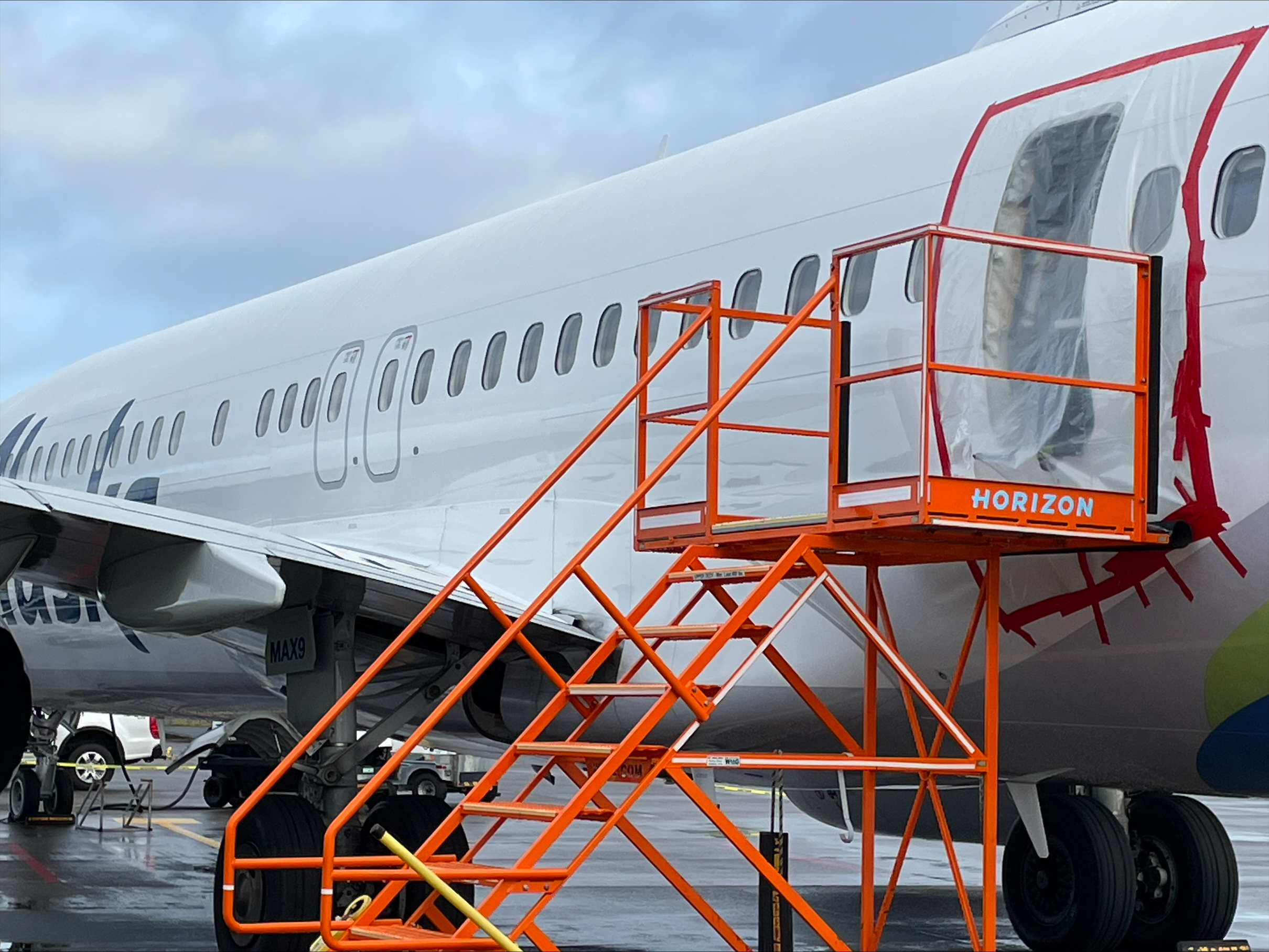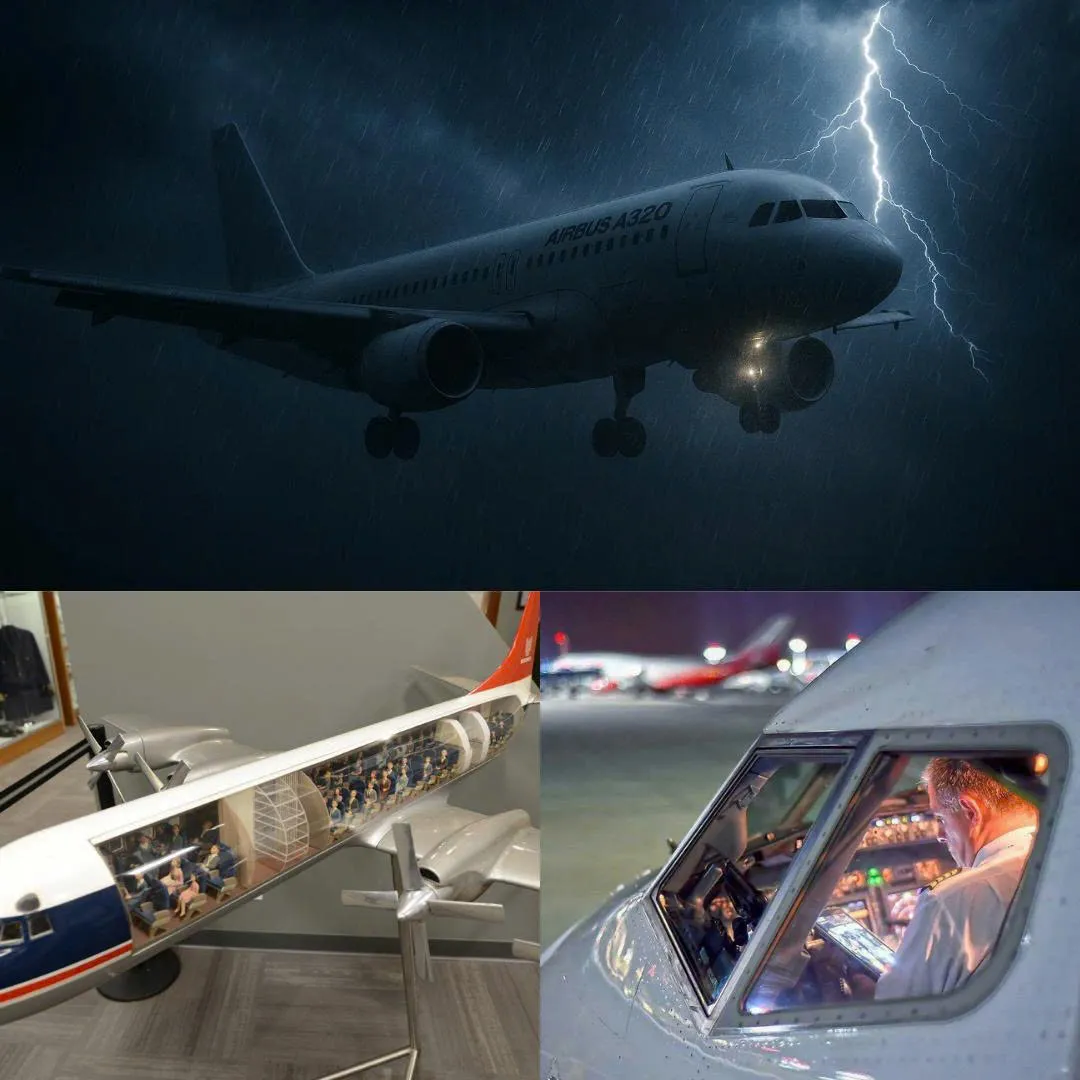
It was supposed to be a calm and routine evening flight over the American West Coast. The passengers aboard Alaska Airlines Flight 1282 were settling into their seats, some watching movies, others dozing off or chatting softly as the aircraft gently climbed through the dusky Portland sky. No one on board expected their journey to be violently interrupted by a sudden roar, a deafening bang, and a hole tearing open in the side of the plane midair.
But at 14,835 feet, that's exactly what happened. A door-sized panel on the side of the aircraft—called a door plug—blew off without warning, ripping a gaping hole in the fuselage. The aircraft suffered an explosive decompression, oxygen masks dropped, and clothes, headsets, and insulation were sucked toward the void. A boy’s shirt was ripped from his body.
Passengers were frozen in shock, staring out at open sky through what used to be a solid wall. What no one on board could have known was that the entire catastrophe stemmed from something unbelievably simple: four bolts that were never installed. A mistake made months earlier, overlooked by multiple teams, nearly led to disaster.
This wasn’t just any aircraft. It was a Boeing 737 MAX 9, the newest and most economically critical member of Boeing’s airliner family. It had just entered service weeks earlier. The component that failed was a cabin door plug, a piece of equipment used to cover unused emergency exits in aircraft configured with fewer seats.
Not all airlines need the full capacity the MAX 9 can offer, and in those cases, doors in the mid-fuselage section can be replaced with permanent plugs. These plugs are supposed to be secured using heavy-duty hardware designed to withstand the immense pressure differences between a pressurized cabin and the thin air outside at altitude. The design itself is sound. But in the case of Flight 1282, human negligence overrode engineering.

The plug had been built in Malaysia, shipped to Spirit AeroSystems, and then installed into the aircraft body at their U.S. facility. From there, it went to Boeing’s final assembly plant in Renton. During that transition, Boeing inspectors noticed damaged rivets near the door plug. This triggered an official non-conformance report. Spirit AeroSystems, responsible for the repair, sent workers to fix the rivets.
But instead of doing a proper repair, they allegedly just painted over the damage. Boeing engineers reopened the issue, documenting with photographs that the work had not been done correctly. Further complications arose when a door seal was also found damaged—possibly during the failed repair attempt. Fixing that seal required removing or opening the door plug.
And that’s where things went fatally wrong. According to whistleblower reports from within Boeing, internal discussions suggested that if the door plug was only opened—not removed—then no formal inspection or quality assurance sign-off would be required.
Official FAA repair logs did not need to be updated unless a full removal had occurred. Somewhere along the way, likely during a shift change or due to poor communication between teams, the four locking bolts that were supposed to hold the door plug in place were never reinstalled. After the interior panels were replaced, the mistake was sealed in. No one knew it was there. No one checked.
The plane was delivered to Alaska Airlines in October 2023. During its first few weeks of service, some minor pressurization controller issues were noted in the tech logs. But there was no indication—none—that a structural failure was looming. In fact, the aircraft had been operating normally, and Alaska Airlines, acting cautiously, had even restricted the plane to overland routes just in case a loss of pressurization required an emergency descent.

There were no indications of imminent danger. And so, on the evening of January 5, 2024, Flight 1282 departed Portland International Airport bound for Ontario, California.
There were 171 passengers onboard. Seats 26A and 26B—located directly next to the door plug—were, by some miracle, empty. The aircraft climbed smoothly into the sky. The captain and first officer were both experienced, with thousands of hours logged on the 737. There was no turbulence, no storm, no technical alerts. At 14,835 feet, just minutes after takeoff, the cabin pressure had reached 5.7 PSI.
That’s about 68% of the pressure differential the aircraft would experience at cruising altitude. And then—suddenly—the unthinkable happened. The door plug, no longer secured by its critical bolts, shifted just enough to break free. With a thunderous blast, it ripped from the fuselage and was ejected into the night sky.
What followed was explosive decompression. Insulation, wall panels, and seat parts were sucked toward the hole. A child’s shirt was torn from his body. Oxygen masks dropped. Passengers screamed. Items flew through the cabin. Seatbacks near the breach twisted toward the opening. If someone had been seated in 26A or 26B, or standing in the aisle, they could have been instantly pulled out. In the cockpit, the blast caused immediate chaos.
The cockpit door was blown open and jammed into the lavatory. The captain’s headset nearly flew off. The first officer’s headset was ripped away. Debris swirled around them. The cockpit filled with wind and noise. Alarms blared. But the pilots had trained for this. They donned oxygen masks, re-established communication, and took control.

For 90 harrowing seconds, the aircraft continued climbing, even as the hole in the fuselage howled behind them. Once communication was restored, the crew initiated a descent, bringing the plane down to 9,000 feet to stabilize cabin pressure. The air was frigid.
The wind was deafening. Passengers clung to their seats. The emergency descent was conducted cautiously, as the crew had no idea whether the structure of the plane had been compromised further. The aircraft circled back toward Portland. The crew declined to accelerate the descent aggressively, concerned about further structural stress. After regaining control and ensuring the aircraft was safe to fly, they landed without further incident at 5:26 PM.
The investigation that followed was swift and damning. Boeing and Spirit AeroSystems, already under scrutiny for past quality issues, now faced global outrage. The FAA immediately grounded all Boeing 737 MAX 9 aircraft with door plug configurations, ordering inspections of every unit. Photos taken post-incident confirmed the terrifying truth: the four bolts meant to secure the door plug had never been installed after the repair.
They were simply missing. Boeing admitted the failure occurred during the production process. Spirit employees had opened the plug but, due to the classification of the work, no formal inspection was required. The system designed to catch mistakes failed completely.
Despite the severity of the incident, there were no fatalities. Only a few passengers suffered minor injuries. But the consequences could have been catastrophic. Had the decompression occurred at cruising altitude, or if those empty seats had been occupied, the outcome could have been tragic.

Boeing’s reputation took another massive hit, and regulators around the world launched deeper investigations into manufacturing practices, whistleblower complaints, and quality control. Spirit AeroSystems, already struggling with repeated issues, found itself at the center of an industrial scandal.
This incident was not a mechanical failure or a software glitch. It wasn’t caused by extreme weather or pilot error. It was caused by someone forgetting to reinstall four bolts. Four bolts. And no one checked. No one noticed. A plane full of people nearly paid the price. The aftermath prompted Boeing to drastically scale back 737 MAX production and to review its entire quality assurance process.
The FAA has since imposed tighter restrictions and oversight on Boeing and its suppliers, vowing not to allow further shortcuts in safety for the sake of production speed.
For the passengers of Flight 1282, the trauma of that flight will likely never fade. They will remember the wind, the fear, and the surreal sight of open sky just inches away. And for the aviation world, this incident is a chilling reminder that even in the age of advanced engineering, it takes only one forgotten step to turn a flight into a nightmare.



